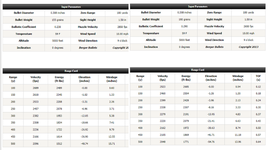@Formidilosus does the hit percentage tool that you often use account for recoil? Wondering if there is an optimized solution that accounts for MV, BC, and recoil.
It seems that recoil affect is intuitive but do we have a way to quantify it in a monte carlo simulation like we do with wind, MV, and BC combinations.
Nothing public. There are some general guidelines that I and others have seen, aka a large body of anecdotal experience; but no in-depth study with hunting rifles and field hit rates. And it greatly changes with less than perfect positions and any stress whatsoever. In other words the rate of skill decay is exponential as you go up in recoil when stressed at all.
The simplest way I do it is to have someone with their zeroed rifle and a Kraft target-

Then they build a prone position and fire one shot. Then pick everything back up, rebuild the position, fire one shot. Etc, etc for a minimum of 20 shots, 30 is better. Whatever their worst shot, becomes their
perfect condition baseline precision- they can do no better than that.
Then, repeat it and add a time component to it- say ten seconds to go from standing to prone and fire one round. Then pick everything back up, stand up, and ten seconds to go prone, build the position and fire one round. Repeat for 10-20 rounds. Whatever the worst shot becomes their realistic baseline precision from prone.
You can and should do this for all positions.
What I have seen consistently under any stressor whatsoever, is that going from 4-5lbs of recoil (223) to 15’ish lbs of recoil (6.5cm) almost doubles the group sizes. Going from 15’ish Ft-lbs of recoil (6.5cm) to 25ft-lbs of recoil (30/06/7 mag) almost doubles it again. Etc, etc.


